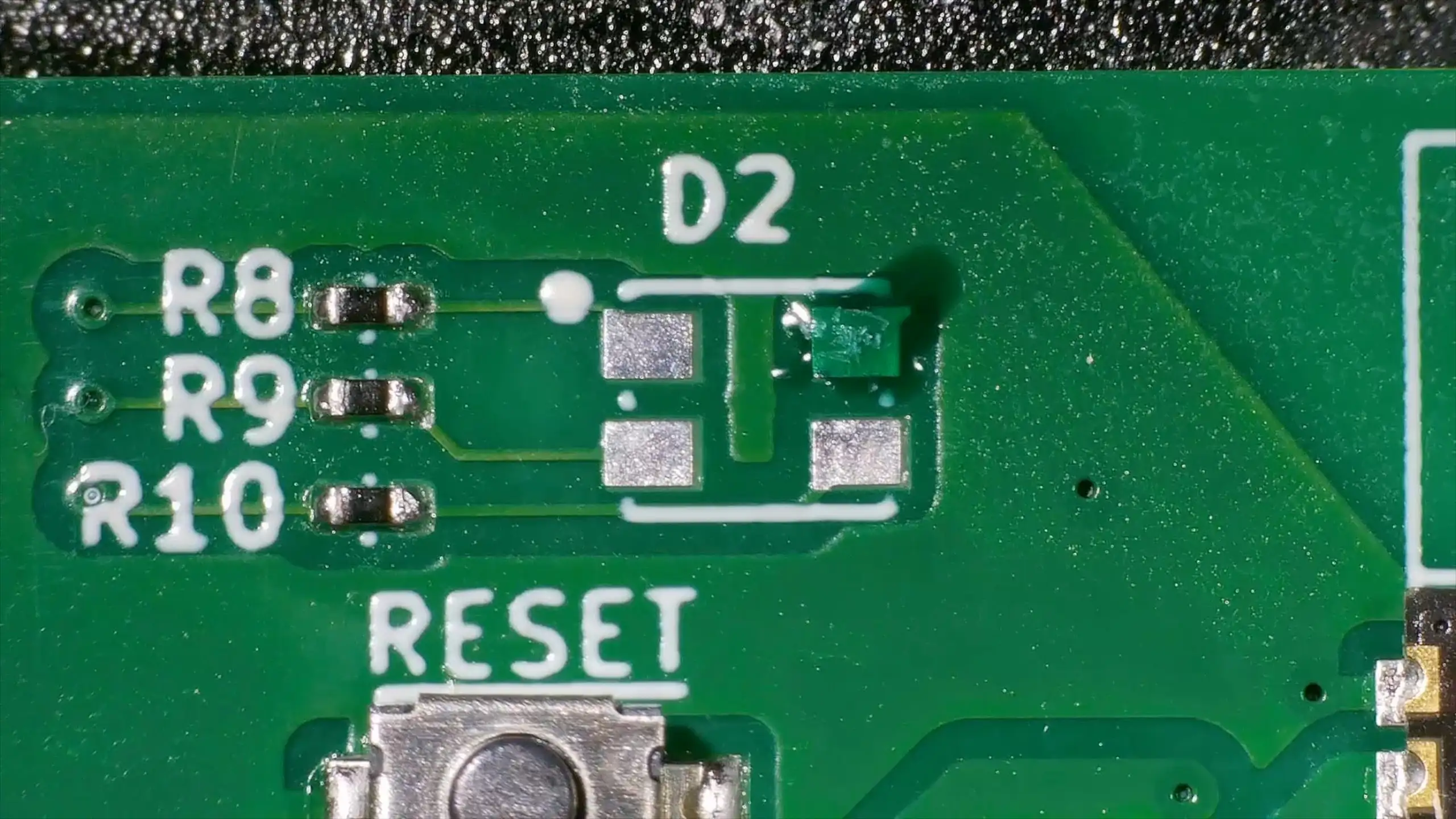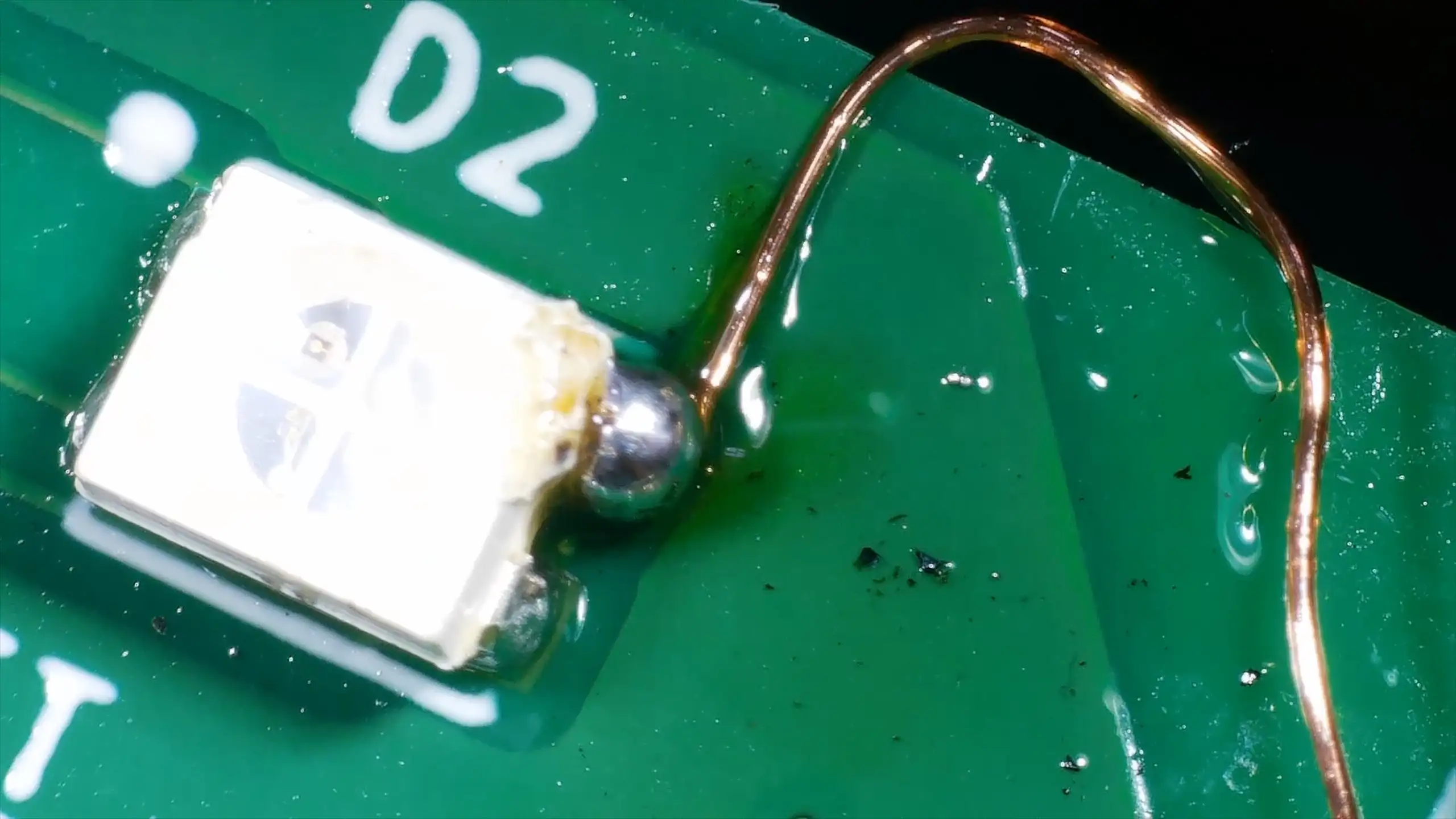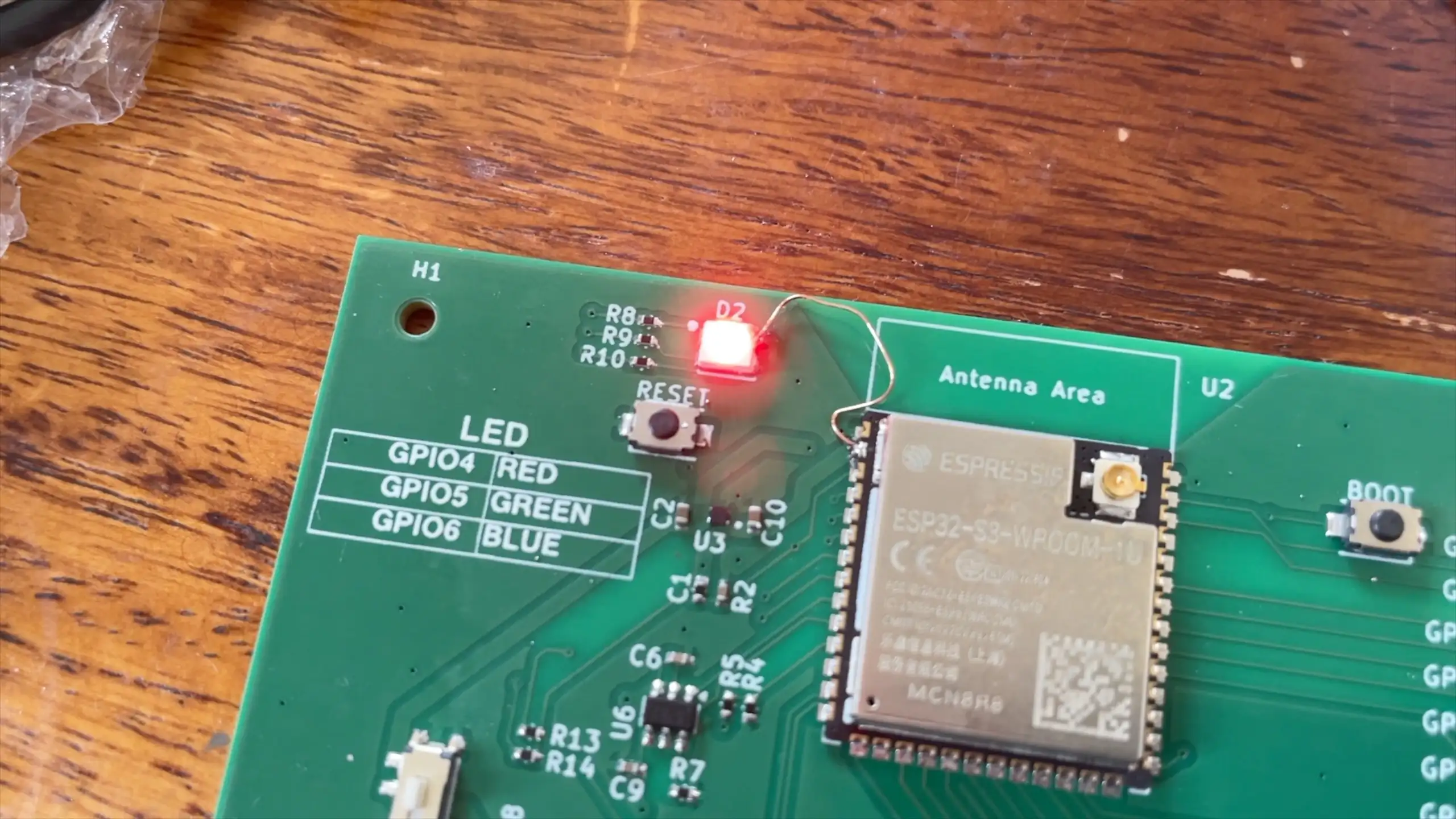read
Want to keep up to date with the latest posts and videos? Subscribe to the newsletter
HELP SUPPORT MY WORK: If you're feeling flush then please stop by Patreon Or you can make a one off donation via ko-fi
You can watch a full video version with more details here.
New PCBs have arrived. Did they work? Hahahaha - well, mostly.
The simplest part of the PCB does not work. The LED…
What went wrong? Common cathode, vs common anode. I designed the board for common cathode, and then specced common anode for the component.
Here’s the schematic and PCB layout.

And here’s the correct schematic.

It’s not a difficult fix though - desolder the LED, and cover up the ground pad with solder resist.

And then solder the LED back on and attach a little wire to the 3V3 rail. This was a pain - and involved a lot of swearing.

A working blink sketch appears!
